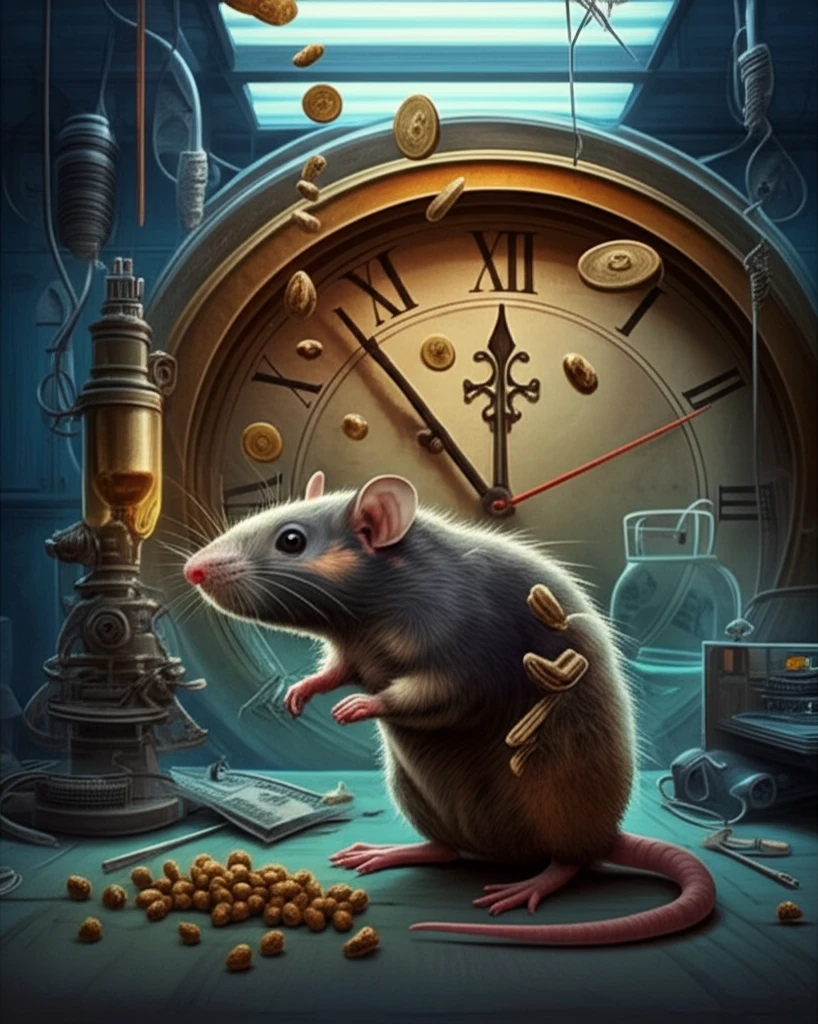
Decoding Your Hunger: How Circadian Rhythms and Economic Factors Impact Your Eating Habits
"Understanding the interplay between your body clock and the cost of food can unlock the secrets to healthier eating patterns."
For decades, scientists have studied the eating habits of rats to understand the fundamental biology of food intake. Early research revealed that rats typically eat in around ten distinct episodes or meals each day, separated by periods of no eating. What's more, their food intake tends to be higher, with shorter intervals between meals, during the night compared to the daytime. These observations have shaped the belief that the 'meal' is a key neurobiological unit driving eating behavior.
Interestingly, this established pattern persists even when rats have to work for their food. In controlled experiments where rats perform tasks to earn food pellets, they still exhibit meal-like patterns. However, in line with basic economic principles, their total food consumption decreases when the 'price' (effort required) to obtain food increases. This raises important questions about the mechanisms governing these changes in eating strategies.
Recent studies on mice have highlighted some intriguing differences in how they regulate their food intake compared to rats. Mice tend to graze almost continuously during the first half of the night, with less defined meals. This prompted researchers to investigate what would happen if mice were forced to eat discrete meals, similar to human eating patterns. These experiments revealed that the timing of food availability relative to the light-dark cycle significantly influences intake.
How Do Economic Choices Impact Meal Timing?

To further explore these questions, a new study examined the interplay between circadian rhythms and economic factors in rats. Researchers designed experiments where rats had limited opportunities to access food, mimicking the way humans often structure their meals. The study focused on understanding how the 'price' of food (effort required to obtain it) and the timing of food availability affected when and how much the rats ate.
- Fixed Unit Price (FUP): The study used "fixed unit prices" (FUP) to model the economic cost of food. This refers to how many lever presses a rat needed to perform to receive a food pellet. A higher FUP meant the food was more 'expensive' in terms of effort.
- Food Opportunities (FOs): Food was made available during specific 40-minute intervals, called 'food opportunities.' These FOs were spaced throughout the day, mimicking meal times.
- Zeitgeber: The light-dark cycle served as the 'Zeitgeber,' a term for an external cue that synchronizes an animal's internal biological clock (circadian rhythm). In this study, the timing of light and dark influenced the rats' eating patterns.
What Does It All Mean?
This research sheds light on how our internal body clocks and the perceived 'cost' of food influence our eating patterns. It highlights that even in controlled settings, animals don't eat mindlessly but rather adjust their behavior based on both internal biological rhythms and external economic pressures. Understanding these factors can help us make more conscious choices about when and what we eat, potentially leading to healthier and more sustainable eating habits.
